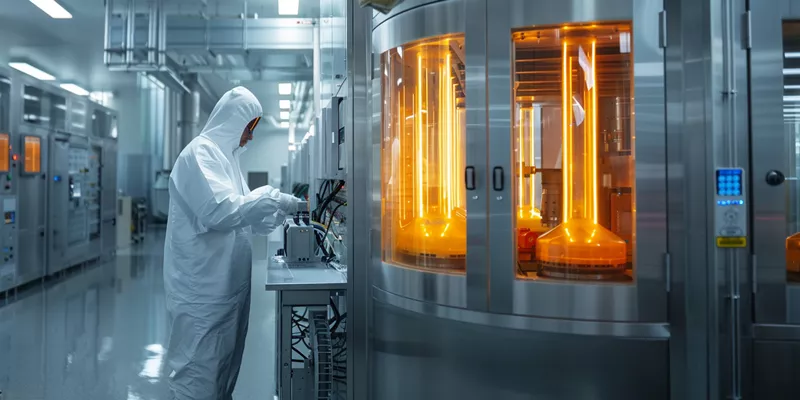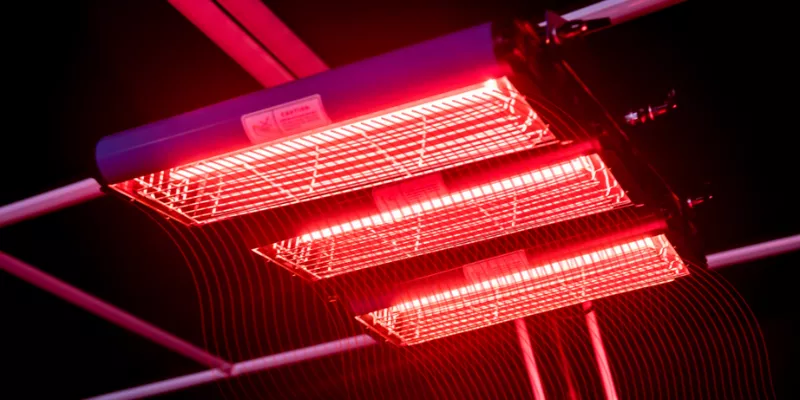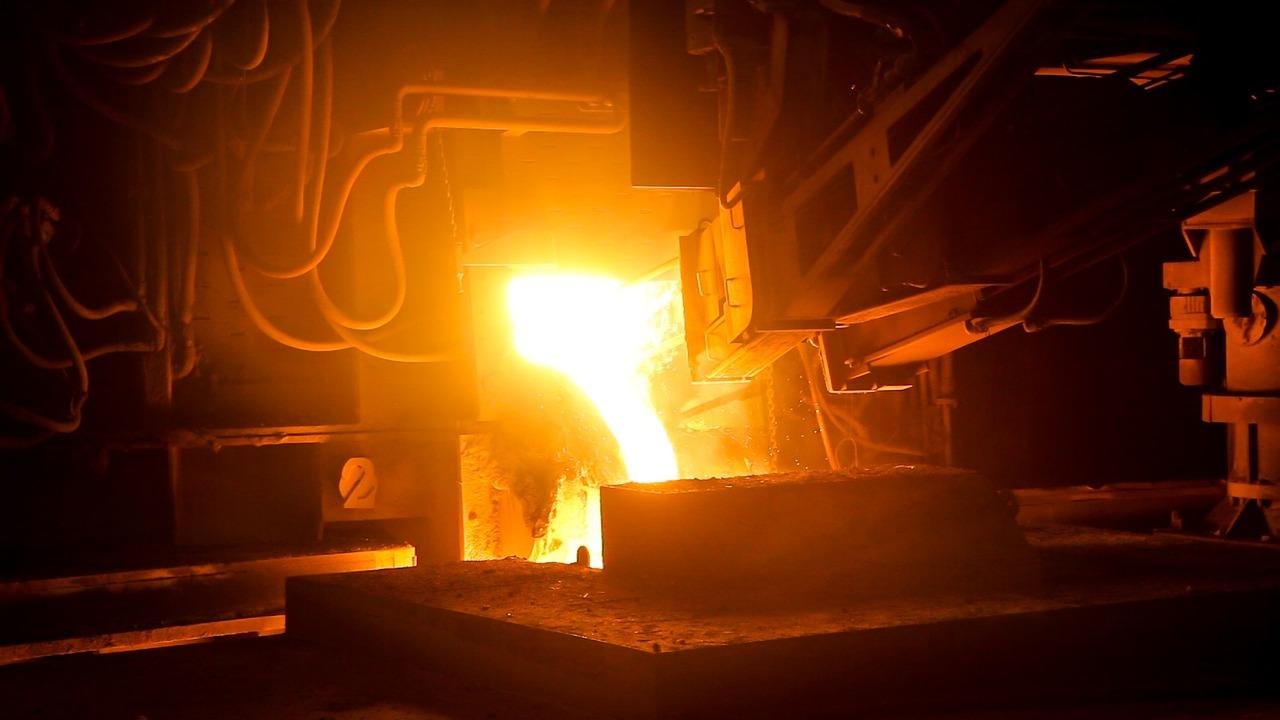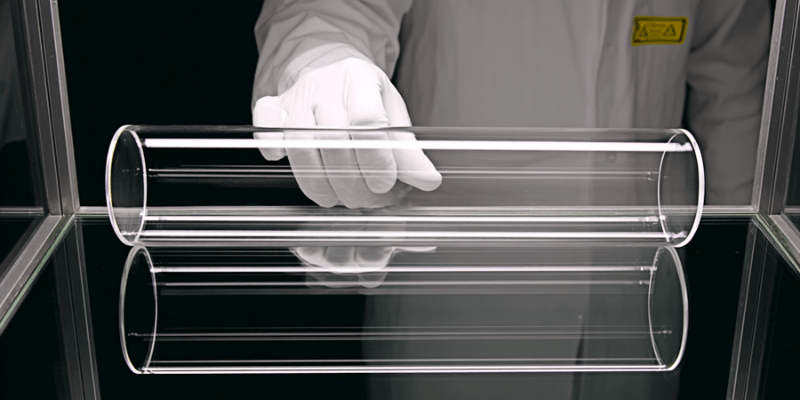Quartz Sight Glass is an essential material used in high-temperature, high-pressure, and chemically demanding industrial applications. It provides unparalleled optical clarity, offering critical visual access in extreme environments. This article explores the definition, properties, applications, and the key benefits of Quartz Sight Glass.
Quartz Sight Glass in Industrial Applications: Widely used in various industries for visual monitoring, this material plays a critical role in sectors like energy, chemicals, and pharmaceuticals. Its high-temperature resistance, chemical stability, and optical clarity make it indispensable.

What is Quartz Sight Glass?
Made from fused silica, Quartz Sight Glass is a specialized type of glass designed to provide transparent windows in industrial settings where other materials might fail. It is known for its excellent resistance to extreme temperatures, high pressures, and chemical corrosion. This makes it a crucial component in systems that require visual monitoring under challenging conditions.
The Composition and Material Properties of Quartz Sight Glass
Quartz Sight Glass is primarily composed of fused silica, a refined form of silicon dioxide (SiO₂). The purity of fused silica gives it its high resistance to thermal expansion, which is crucial for maintaining its stability at elevated temperatures. Additionally, fused silica’s high chemical resistance allows it to endure exposure to most acids, except for hydrofluoric acid1. This chemical resistance makes Quartz Sight Glass ideal for use in harsh environments, including those that involve corrosive materials. Its ability to withstand high temperatures without degrading makes it indispensable in industries that demand reliable and durable materials.
Quartz Sight Glass is carefully manufactured to maintain its integrity and optical clarity. Fused silica’s composition ensures that it retains its shape and optical properties even under extreme conditions. The transparency of the material allows operators to visually monitor processes in high-temperature and chemically reactive environments. This transparency is especially important in applications where real-time monitoring is necessary for ensuring safety and accuracy.
The material’s inherent properties, such as low thermal expansion and high chemical resistance, distinguish Quartz Sight Glass from other types of glass. Standard glass, for example, can crack or degrade under extreme temperatures or exposure to corrosive chemicals. In contrast, Quartz Sight Glass remains stable, making it the preferred choice for industries where high thermal and chemical stability is essential.
How Quartz Sight Glass is Manufactured and Processed
The manufacturing process for Quartz Sight Glass begins with high-temperature fusion of silica. The silica is heated until it melts, forming a glass-like material that is then shaped into the desired form. Precision molding and cutting methods are often used to create the specific shapes required for various applications. These manufacturing techniques ensure that the material can withstand the physical and thermal stresses of its intended environment.
After the basic shaping process, the Quartz Sight Glass is typically polished to achieve a high level of optical clarity. This polishing process removes any surface imperfections that could compromise the transparency and strength of the material. For certain applications, additional coatings may be applied to enhance the material's resistance to UV radiation, chemicals, or other environmental factors. These coatings further extend the life of the Quartz Sight Glass and make it suitable for more demanding industrial applications.
The manufacturing process not only focuses on the physical shaping of the material but also on maintaining its chemical integrity. To ensure high-quality production, stringent quality control measures are employed throughout the manufacturing process. These include tests to confirm that the material meets the required specifications for transparency, strength, and chemical resistance. The end result is a highly durable and reliable product that can withstand the most challenging industrial conditions.
Key Differences Between Quartz Sight Glass and Other Types of Glass
Quartz Sight Glass stands apart from other types of glass due to its exceptional performance in extreme conditions. Unlike regular glass, Quartz Sight Glass can withstand temperatures well above 1000°C without compromising its structural integrity. Standard glass would typically crack or degrade under such high temperatures, but Quartz Sight Glass retains its strength and optical clarity.
Additionally, Quartz Sight Glass exhibits superior resistance to chemicals compared to other types of glass. While most glass materials can be compromised by exposure to acids, bases, or solvents, Quartz Sight Glass can endure such exposure without suffering from corrosion or degradation. This makes it an ideal choice for industries where chemicals are handled regularly, such as in the chemical processing or pharmaceutical industries.
The optical clarity of Quartz Sight Glass also distinguishes it from other types of glass. While standard glass may distort light or cause visual interference, Quartz Sight Glass transmits light without distortion, providing clear visibility for monitoring critical processes. This clarity is crucial for applications where visual inspection is necessary, such as in reactors, furnaces, and distillation columns2.
What Are the Key Performance Characteristics of Quartz Sight Glass?
The key to Quartz Sight Glass’s effectiveness lies in its unique set of performance characteristics, including its high-temperature resistance, optical clarity, and chemical stability. These features are vital for ensuring that it can perform reliably in demanding industrial environments.
High-Temperature Resistance and Why It Matters
Quartz Sight Glass is renowned for its exceptional ability to withstand high temperatures, with the capacity to endure temperatures exceeding 1000°C. This heat resistance is vital in industries such as power generation, metal processing, and chemical production, where extreme temperatures are common. Unlike regular glass, which may soften, crack, or lose its transparency under high heat, Quartz Sight Glass retains its shape and optical properties, ensuring uninterrupted monitoring of processes.
The high-temperature resistance of Quartz Sight Glass allows it to perform in furnaces, reactors, and other environments where materials are exposed to intense heat. This ensures that operators can monitor the progress of reactions or processes without the need for physical intervention, reducing the risk of accidents or equipment failure. It also helps in maintaining system efficiency, as operators can detect potential issues, such as temperature fluctuations, that might otherwise go unnoticed.
This property is especially important in high-heat industrial processes where safety and precision are critical. By maintaining optical clarity even in extreme temperatures, Quartz Sight Glass ensures that visual monitoring remains reliable and effective, which is crucial for ensuring the safety of industrial operations. Its ability to endure thermal stress makes it indispensable in industries where heat resistance is a key requirement.
Optical Clarity for Enhanced Visual Monitoring
The optical clarity of Quartz Sight Glass is one of its most significant advantages. Its ability to transmit visible light without distortion enables clear visual monitoring of industrial processes, which is essential for ensuring accurate measurements and process control. This clarity allows operators to observe critical factors, such as flow rates, reaction progress, and temperature variations, in real-time.
In applications such as chemical reactors, furnaces, and distillation columns, having clear visual access is crucial for the success of the operation. Quartz Sight Glass allows operators to directly observe the interior of equipment without interfering with the process or system. This visual transparency makes it easier to detect issues early, such as flow obstructions, temperature irregularities, or unwanted chemical reactions, enabling quick corrective action before problems escalate.
Quartz Sight Glass is particularly beneficial in applications where visual inspection is the primary method for monitoring. Whether used in high-temperature processes, chemical reactions, or fluid flow systems, its optical clarity provides a level of visibility that ensures accuracy, improves safety, and helps maintain the desired performance of industrial equipment.
Chemical and Thermal Stability in Extreme Environments
Quartz Sight Glass is highly resistant to both thermal stress and chemical exposure, making it ideal for use in extreme industrial environments. Its ability to withstand exposure to most acids, bases, and solvents without degradation ensures its reliability in chemical processing applications. In industries like petrochemicals, pharmaceuticals, and food production, where chemical reactions are common, Quartz Sight Glass ensures that operators can safely monitor processes without risking contamination or material failure.
Additionally, Quartz Sight Glass’s ability to resist thermal shock means that it can endure sudden temperature changes without cracking or breaking. This makes it suitable for environments where rapid heating and cooling cycles are common, such as in heat exchangers and reactors. The material’s durability ensures that it remains intact and transparent, allowing for continuous monitoring without the need for frequent replacements or maintenance.
This combination of chemical and thermal stability allows Quartz Sight Glass to perform in the harshest conditions, providing consistent reliability and accuracy. Whether exposed to high temperatures, aggressive chemicals, or fluctuating environmental conditions, Quartz Sight Glass maintains its structural integrity, ensuring the safety and efficiency of industrial processes.
What Are the Industrial Applications of Quartz Sight Glass?
Quartz Sight Glass is used in a variety of industries that require high-performance materials for extreme conditions. Its applications span across high-temperature, high-pressure, and chemical environments, offering clear visual access to operations that would otherwise be hazardous or difficult to monitor.
Role in High-Temperature and High-Pressure Environments
In industries such as power generation, metal processing, and chemical manufacturing, Quartz Sight Glass is indispensable for providing transparency in high-temperature and high-pressure environments. Its ability to withstand extreme conditions while maintaining optical clarity makes it ideal for use in reactors, furnaces, and high-pressure vessels. These environments often involve temperatures and pressures that would cause standard glass to crack or degrade, but Quartz Sight Glass remains stable and functional.
In power plants, for example, Quartz Sight Glass is used to monitor combustion processes, ensuring that reactions occur efficiently and safely. Its ability to withstand the intense heat and pressure in such environments allows operators to visually inspect the combustion chamber without risking exposure to hazardous conditions. Similarly, in chemical reactors, Quartz Sight Glass allows for real-time monitoring of the reactions occurring inside, helping to maintain optimal reaction conditions and prevent dangerous scenarios.
The stability of Quartz Sight Glass under high-pressure conditions also makes it essential for monitoring equipment in the oil and gas industry. Whether used in pipelines, reactors, or pressure vessels, it provides operators with a clear view of critical processes, enabling them to take corrective actions when necessary and ensuring the safety of the entire operation.
Use in Chemical and Pharmaceutical Industries for Monitoring
In the chemical and pharmaceutical industries, Quartz Sight Glass is a vital tool for monitoring critical processes such as distillation, mixing, and chemical reactions. Its resistance to most acids and bases ensures that it can withstand the harsh chemical environments typically encountered in these industries. Whether used to observe chemical reactions in a reactor or monitor the progress of a distillation process, Quartz Sight Glass provides a reliable means of visual inspection.
One key advantage of Quartz Sight Glass in these industries is its ability to allow operators to safely observe processes in real-time without compromising the integrity of the system. For instance, in the pharmaceutical industry, precise monitoring of chemical reactions is essential for ensuring product quality and safety. Quartz Sight Glass provides the necessary visibility to detect any issues, such as flow irregularities or temperature fluctuations, allowing operators to make adjustments as needed.
Moreover, its optical clarity is crucial in ensuring accurate monitoring. The ability to observe the process without distortion ensures that the system is operating as intended. This is especially important in industries where even small deviations from the desired conditions can result in compromised product quality or safety hazards.
Applications in Energy Management and Heat Exchanger Systems
Quartz Sight Glass plays a crucial role in energy management systems, particularly in applications like heat exchangers, boilers, and solar power systems. Its transparency allows operators to observe the flow of fluids and gases, ensuring efficient heat transfer and preventing system failures. In heat exchangers, for example, Quartz Sight Glass is used to monitor the condition of the heat transfer medium, ensuring that it is flowing as expected and that there are no blockages or leaks.
In solar power applications, Quartz Sight Glass is used to monitor the flow of heat transfer fluids in solar collectors. This allows operators to ensure that the system is functioning efficiently, maximizing energy production. Similarly, in oil refining and industrial heating systems, Quartz Sight Glass helps monitor the flow of liquids and gases, ensuring that the system remains efficient and that no failures occur.
In addition to energy applications, Quartz Sight Glass is also used to monitor the performance of industrial heating systems. Its ability to withstand high temperatures while maintaining transparency ensures that operators can observe the system’s performance, making adjustments as needed to prevent overheating or inefficiencies.
What Are the Benefits of Quartz Sight Glass in These Applications?
Quartz Sight Glass brings numerous advantages to the table, enhancing efficiency, reducing costs, and improving safety in industrial processes. These benefits make it a preferred material in sectors where performance and reliability are critical.
Efficiency Gains in Industrial Systems Through Clear Monitoring
Quartz Sight Glass improves the efficiency of industrial systems by enabling real-time visual monitoring. The transparency of the material allows operators to observe the condition of the system at all times, identifying issues such as flow disruptions, pressure changes, or temperature fluctuations. This early detection allows for quick corrective actions before problems escalate, improving overall system performance.
By allowing for constant monitoring, Quartz Sight Glass helps to optimize the operation of reactors, furnaces, and other high-temperature systems. This ensures that systems operate within optimal conditions, reducing the likelihood of energy loss or system failure. Operators can make timely adjustments to maintain system stability, which not only enhances efficiency but also extends the life of the equipment.
The ability to monitor industrial processes in real-time also improves safety. By identifying potential issues before they become critical, Quartz Sight Glass helps prevent accidents and ensures that systems run smoothly and safely. This is particularly important in industries where downtime can be costly, such as in chemical processing, energy generation, and manufacturing.
Long-Term Durability and Reduced Maintenance Costs
Quartz Sight Glass is known for its long-term durability, which translates into reduced maintenance costs. Its resistance to thermal shock, chemical exposure, and mechanical wear means that it requires fewer replacements and repairs, saving industrial operations significant amounts of money. The durability of Quartz Sight Glass makes it a cost-effective solution for industries that require reliable, long-lasting materials.
In addition to reducing maintenance costs, the longevity of Quartz Sight Glass ensures that industrial systems remain operational for longer periods. This is especially beneficial in high-stress environments where system downtime can result in significant financial losses. By reducing the frequency of replacements, Quartz Sight Glass helps improve the overall efficiency of industrial operations, ultimately lowering operational costs.
Furthermore, Quartz Sight Glass contributes to reducing maintenance costs by preventing the need for frequent inspections or interventions. Its high durability ensures that the material remains intact and functional for extended periods, allowing operators to focus on other aspects of the system without worrying about the glass needing to be replaced or repaired.
Enhanced Safety and Accuracy in High-Risk Processes
Quartz Sight Glass enhances safety and accuracy in high-risk industrial processes by allowing operators to visually monitor processes in real-time. In industries like chemical manufacturing, energy generation, and pharmaceutical production, it is crucial to ensure that processes are running smoothly and safely. Quartz Sight Glass provides a clear view of critical processes, helping to detect potential issues before they escalate.
In high-risk environments, such as chemical reactors or energy generation systems, the ability to visually inspect processes without direct contact is essential for ensuring safety. Quartz Sight Glass allows operators to monitor conditions without the risk of exposure to hazardous materials or environments. This enhanced visibility helps prevent accidents and ensures that processes are operating within safe parameters.
Additionally, the clarity of Quartz Sight Glass ensures that the monitoring process is accurate. Operators can trust the visual data provided by Quartz Sight Glass to make informed decisions, which improves both the accuracy of operations and the overall safety of industrial processes.
Conclusion
Quartz Sight Glass provides exceptional thermal resistance, optical clarity, and chemical stability, making it indispensable for industrial applications requiring transparency in extreme environments. With its long-term durability and performance in high-temperature and high-pressure processes, it plays a crucial role in ensuring operational efficiency, safety, and cost savings across industries.
"Navigating the complexities of material selection presents a significant engineering challenge. Leverage the expertise of TOQUARTZ’s engineering team, backed by 20+ years of manufacturing experience, for a complimentary consultation on your custom quartz glass requirements."
FAQ (Frequently Asked Questions)
What is the maximum temperature Quartz Sight Glass can withstand?
Quartz Sight Glass can withstand temperatures up to 1000°C, depending on the specific material grade and application.
How do I choose the right Quartz Sight Glass for my application?
When selecting Quartz Sight Glass, it’s essential to consider factors such as temperature resistance, chemical compatibility, and the specific visual clarity required for your application.
Can Quartz Sight Glass be customized for specific applications?
Yes, Quartz Sight Glass can be customized in terms of size, shape, and surface finish to meet the specific needs of different industrial applications.
How does Quartz Sight Glass compare to other materials like borosilicate glass?
Quartz Sight Glass offers superior thermal and chemical resistance compared to borosilicate glass, making it a better choice for extreme conditions.
References:





